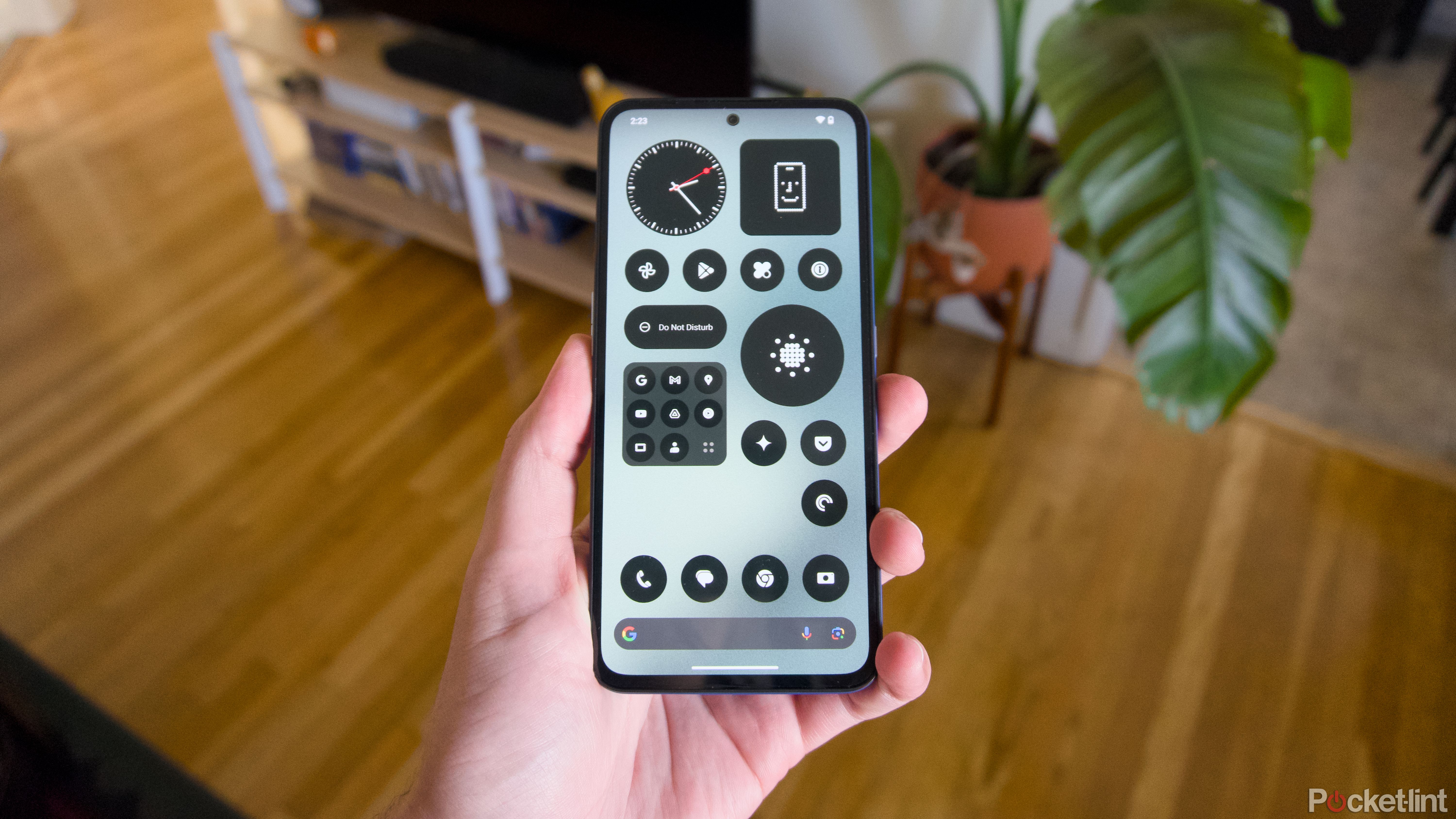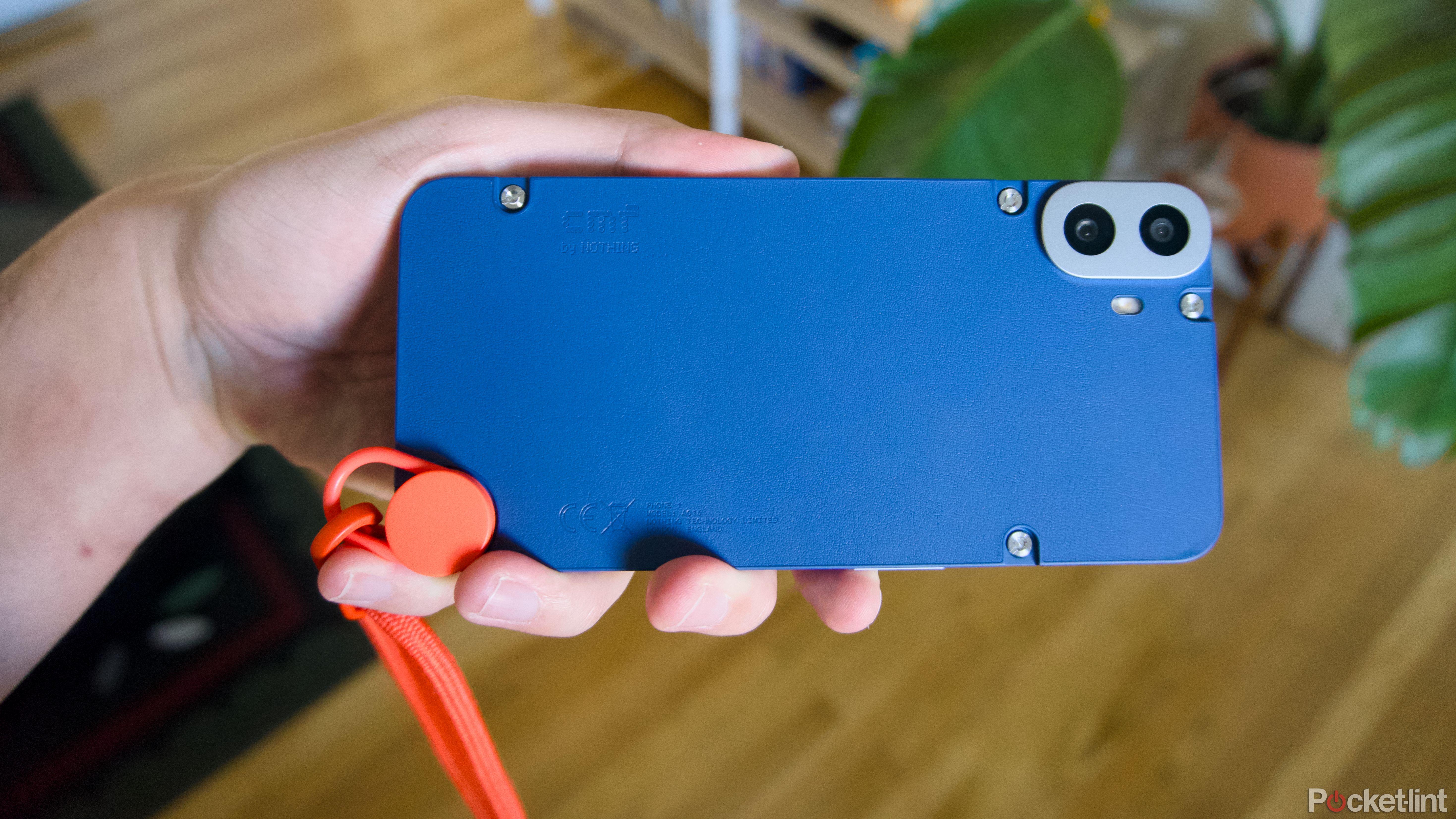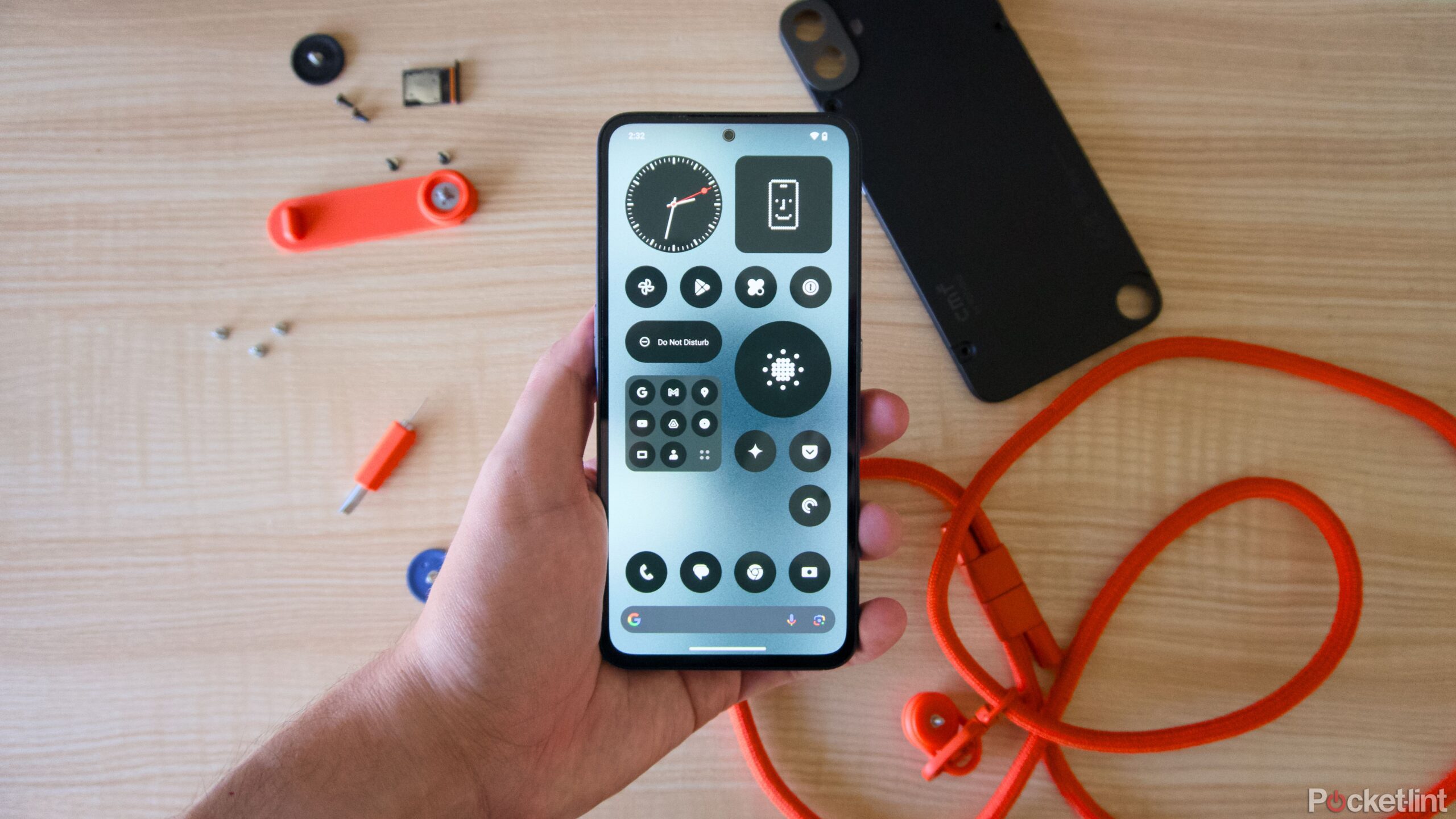
Key Takeaways
- The CMF Phone 1’s accessory system adds functionality and further customization.
- On its own, the phone’s design makes it one of the best-looking budget phones available.
- That’s on top of excellent, multi-day battery life and average camera and chip performance.
Until 2024, CMF, Nothing’s budget tech brand, has mostly been a curiosity, producing plastic-y, unique earbuds and other accessories that are primarily targeted at the regions Nothing’s current mid-range phones and wireless earbuds don’t reach. The CMF Phone 1 changes that.
Nothing’s new budget phone brings customization and an eye-catching design to the budget smartphone space, in many ways reinventing what it means to be a “feature phone.” The Phone 1 is no Fairphone 5 in terms of repairability, but it does have the most personality of any phone I’ve held, and on top of that, it’s a solid Android device in its own right. Whether or not you’re taken with its gimmick, the CMF Phone 1 shows the quality of Nothing’s first two phones weren’t a fluke.

CMF Phone 1
Nothing’s first budget, the CMF Phone 1, is a solid Android phone with a unique system for attaching and detaching accessories like a kickstand, lanyard, and wallet.
- Accessory system is cool and useful
- The best looking budget phone out there
- Gives you everything you need from a good smartphone
- Performance leaves something to be desired
- Camera does poorly in low light
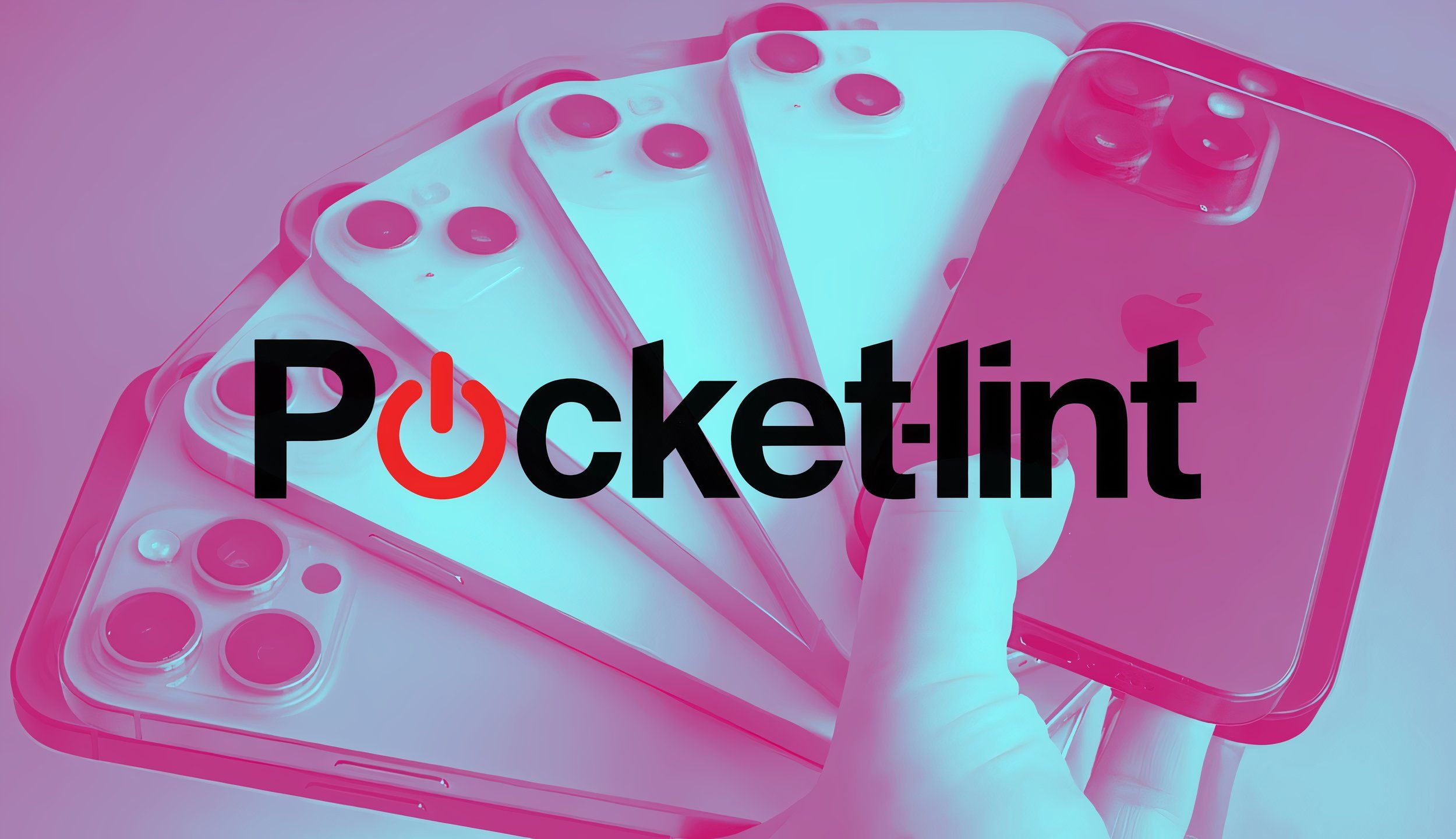
See our process
How we test and review products at Pocket-lint
We don’t do arm-chair research. We buy and test our own products, and we only publish buyer’s guides with products we’ve actually reviewed.
Price, availability, and specs
The CMF Phone 1 was announced on July 12th, 2024 alongside a new pair of wireless earbuds and a smartwatch. The Phone 1 is interesting because it’s Nothing’s first budget smartphone at a starting price of $199, and a bit of a departure from what made it’s more premium Phone 1, Phone 2, and Phone 2(a) stand out. The Phone 1 is still design-forward (CMF stands for “colors, materials, and finish”) but where Nothing’s early products turned the technical details of how a phone works into a luxury through a translucent back, the CMF Phone 1 looks like you could have 3D printed some of its components and built-it yourself.
That’s because Nothing has designed the device to be customizable, with a removable back and an “Accessory Point” with a circular cover you can unscrew with your fingers. You can attach a variety of accessories to the back of the Phone 1, including a kickstand, lanyard, and wallet attachment, on top of changing its back cover from the default black, to a bright orange, light green, or navy blue.
Regardless of the accessories you choose you’ll get a 6.67-inch AMOLED display with a smooth 120Hz refresh rate and 2,000 nits of peak brightness, a USB-C port, and a under-display fingerprint reader. Inside, the CMF Phone 1 has a MediaTek Dimensity 7300 5G chip, 8GB of RAM, and either 128GB or 256GB of storage for storing all of your apps and photos. The one wrinkle to the CMF Phone 1 is that if you live in the United States, outside the European and Asian markets Nothing is targeting, you’ll have to use the company’s beta program which limits you to T-Mobile’s network if you want to use 5G and 4G, or AT&T and Verizon if you’re comfortable with only being able to use 4G. For the rest of the Phone 1’s specs, review the table below.
What I liked about the CMF Phone 1
The CMF Phone 1’s battery life lasts all day and then some
One of the most important features of a budget phone is battery life. When you’re budget-conscious, how your phone works matters a lot more than how it looks, and how long the battery lasts determines whether you’ll be able to use it at all. Despite the CMF Phone 1’s price, Nothing didn’t compromise on the battery.
The 5,000mAh battery in the Phone 1 gives you a lot of wiggle room to use your phone and not have to worry about charging it. I was able to get nearly a week of standby time after a single charge of the Phone 1, and around three days with casual smartphone use. That can obviously fluctuate depending on what you’re trying to do on your phone, but if you’re primarily on Wi-Fi most of the day (like I was) and aren’t spending hours playing demanding games on your phone, you should have more battery life than you know what to do with.
Nothing OS makes the right amount of tweaks
A good Android skin can make a cheap phone feel premium even when its hardware is decidedly cheap, and the CMF Phone 1 is an excellent example of the right way to go about doing it. Nothing OS, Nothing’s skin of Android is just the right mix of stylized streamlining and genuinely new software. If the 2010s were characterized by heavy-handed Android skins like TouchWiz or HTC Sense that made your smartphone prettier, but harder to use, Nothing OS strikes the right balance.
Nothing’s made custom icons for the majority of popular apps you might want to keep on your home screen, thrown in some of its own custom widgets, and added new home screen customization options, like being able to dramatically enlarge an individual app icon. Nothing OS also defaults to dark mode, meaning any app that supports the feature will be easy on the eyes as soon as you boot up your Phone 1 for the first time.
Nothing OS 3.0 is currently in beta and should arrive alongside Android 15’s improvements in December 2024 on the CMF Phone 1.
Outside those basics, Nothing OS also includes some new apps, like a Weather app in Nothing’s signature dot matrix style, Nothing X, which lets you manage the company’s Bluetooth accessories, and Recorder, which is Nothing’s answer to the Pixel Recorder app, just with a lot more style. If it’s important to you that your phone looks unique among the sea of Apple and Samsung phones, the CMF Phone 1 definitely stands out.
The CMF Phone 1’s modularity is refreshing, and a lot of fun
An obvious draw of the CMF Phone is design, and the phone has the DIY, engineer-y look it does because it’s meant to be taken apart. Not in a way that makes it necessarily more repairable or longer-lasting, but a lot more compatible with the kinds of accessories and customizations you would normally have to make at the point of purchase. I was optimistic about what the modularity of the CMF Phone 1 portends before I got to use it, and actually using the phone hasn’t changed that. It’s unbelievably cool that Nothing lets you do this.
It’s worth noting that it’s much easier to attach accessories to the Accessory Point than change the back cover of the CMF Phone 1. Besides removing the SIM card slot, four back screws, and the Accessory Point cover, you have to use a concerning amount of force to pry off the back cover — so much force that it hurt. On one hand, this speaks to the sturdy construction of the CMF Phone 1. On another hand, it immediately discouraged me from thinking that customizing the CMF Phone 1 was something I’d do regularly. On the whole, though, I think the benefits of accessories outweigh the difficulty of customization — I was most taken with the magnetic wallet attachment — and the CMF Phone 1 has a feature basically no other smartphones currently have.
What I didn’t like about the CMF Phone 1
Low light photography is a real mixed bag
You don’t pay less than $500 for a smartphone and expect an amazing camera experience, and that holds true for the CMF Phone 1. While the device makes for an acceptable daytime shooter, at night, things are a lot more hit or miss. My biggest criticism is the tremendous loss of detail you get when you try and take any kind of photo at night or in the dark without a direct light source. The Phone 1’s effort to salvage photos dramatically smooth faces and ditches fine lines in order to make sure that people are recognizably people.
You’ll also be hard-pressed to capture any kind of motion that’s recognizably motion without some kind of blur. Taking photos of a concert in a room only lit by stage lights and whatever streetlights were seeping in from outside, I didn’t feel like anything I captured was really ready to be shared online.
That’s not to say that Nothing doesn’t pack in software features to try to make up for the camera’s shortcomings (there’s a Portrait mode for added bokeh, and an Expert mode that gives you more control over settings, for example), they just can’t make up for the CMF Phone 1’s single 50-megapixel sensor. If you’re confused by the back of the Phone 1, which appears to have two lenses, that seems partially intentional. Only one of those cutouts is a camera, the other is a sensor for taking better portrait photos. I wasn’t able to tell if it made a difference while I was testing the camera.
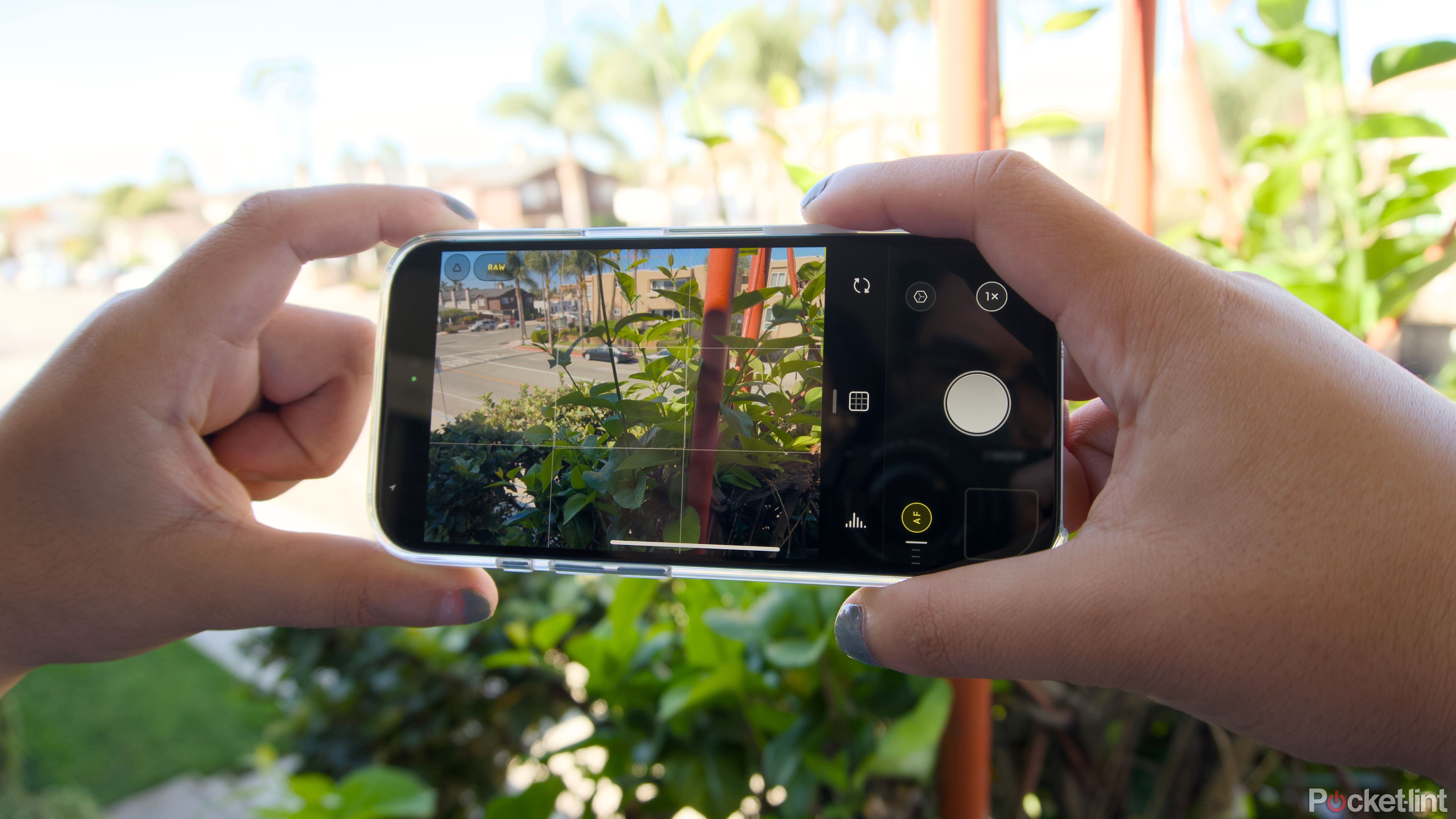
Related
Halide has made me a smartphone photography convert
Your iPhone is already a good camera, Halide is an app that makes you want to use it as one.
Don’t expect miracles from a budget smartphone chip
While the MediaTek chip inside the CMF Phone 1 is good enough for most day-to-day smartphone use (Slack, Gmail, Messages, Chrome, and Pocket for reading) it’s less than ideal if you want to use your phone to play games. Diablo Immortal runs on the Phone 1, but not at all with the same smoothness or fidelity that it does on the iPhone 16, Pixel 9, or Samsung Galaxy S24.
…It’s less than ideal if you want to use your phone to play games.
This isn’t a huge problem in the grand scheme of things, but it could have long-term impacts if you plan on holding on to the CMF Phone 1 for longer than a few years. If you can already notice a difference in performance when you first start using your phone, there’s no telling how much it will slow down by the time you’re ready to upgrade it.
Should you buy the CMF Phone 1?
It’s hard to go wrong if it’s available on your carrier
The term “feature phone” was a way of differentiating phones that went beyond the texting and calling features that defined early cellphones. A feature phone might have access to email, or an MP3 player, or have a built-in radio. They did more, and were more expensive, but didn’t reach the full-blown premium computer prices of modern smartphones. The CMF Phone 1’s “feature” is its accessory system and ability to be customized more than the average phone, and they’re worth paying for in my book. Even if you never attach a kickstand to the Phone 1, you’ll probably be happy how long you can go before you have to charge it.


CMF Phone 1
The CMF Phone 1 isn’t the only affordable smartphone that Nothing offers. Pocket-lint has reviewed the Nothing Phone 2a Plus, Nothing Phone 2a, and Nothing Phone 2, and come away tremendously happy with what the hardware maker is putting out. For other budget and mid-range phone options, both Samsung and OnePlus have excellent models to consider, too.
Trending Products

